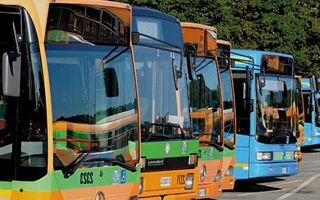(Finance) – Il production value from the TPL companies records an acceleration of 7.1% at the median level in 2022 and growth of 4.4% in 2023. The result is also partly linked to the recovery in demand for mobility. Although TPL companies are still suffering, on an average national level, from a structural reduction in passengers compared to pre-Covid datathe data show a progressive recovery: in 2022 the passengers transported grew by 31% compared to 2021, in 2023 by 15% compared to 2022. However, removing the data from inflation, the value of production, compared to 2019, shows a slight decline of 2%. This is what emerges from the sixth edition of Intesa Sanpaolo – ASSTRA report “The performance of local public transport companies” presented today in Bari.
The forecasts for the two-year period 2024-2025 indicate a growth in the value of production, which will stand at around 1% in 2024 and 2% in 2025. The margins are affected by the accentuated dynamics of energy costs: the Gross Operating Margin (GOM) at the median level is reduced to 4.2% of the value of production in 2022 (compared to 5% in 2021), and then rises to 6.1% in 2023, when cost tensions ease. Marked acceleration of investment flows: in 2023, companies invested 17.6% of their turnover at the median level.
THE operating costs record growth of 1.3% compared to 2023 and it is estimated that they will have a further growth of 1.1% in 2025, compared to 2024: this dynamic is supported by the acceleration of labor cost and by the increase of cost for serviceswhile spending on raw materials/energy should reduce compared to 2023 values. These dynamics will lead to a growth in gross margins in the two-year forecast period (2024-2025).
Critical point highlighted in the study concerns the timid growth of tariffs compared to inflation, which recorded an increase of 26% for the transport sector, while tariffs of TPL have grown only 11.1% since 2016. The cost per car-km at a median level it is equal to 3.7 euros in 2023, stable compared to 2022 and slightly increasing compared to 2021. The cost per passenger instead, it was affected by the positive performance recorded by demand and fell on a median level from 3.6 euros to 2.9 euros.
“The study presented today shows how companies are doing their part, with great management efforts, demonstrating great ability to ground investments – he declared Andrew GibelliPresident of ASSTRA –. We need, however, a stable and fertile context to continue investing and attracting demand for mobility. To avoid negative and serious impacts on businesses and to frustrate the efforts made, it is crucial to index the National Transport Fund to inflation, recovering previous inflation by at least 800 million euros per year, in order to face the challenges linked to the general increase in production costs , and in particular for the renewal of the sector’s national collective bargaining agreement, and to complete and strengthen the sector’s energy transition processes”.
“The analysis of company balance sheets highlights the further acceleration of investment flows in 2022 and 2023, the result of the growing attention of both companies and policy makers towards a service that represents a fundamental lever for the sustainability of our cities and for the spread of new mobility models – he declared Laura BellsHead of Local Public Finance, Research Department Intesa Sanpaolo declares –. The investments have made it possible to bring the average age of the vehicle fleet to 10 years, a significant improvement compared to 2018. But there is still a long way to go with reference to both fleet renewal, particularly in some territories, and the energy transition” .
There presentation of the Intesa Sanpaolo – ASSTRA Report, held in Bari at Villa Romanazzi Carducci, was opened by Andrea Gibelli, President of ASSTRA, and Matteo Colamussi, President of ASSTRA Puglia. Following, institutional greetings from the local authorities: Domenico Scaramuzzi, Councilor for Land Care, with delegations to Public Works, Networks and Sustainable Mobility of the Municipality of Bari, and Debora Ciliento, Councilor for Transport and Sustainable Mobility of the Puglia Region, are The data in the report was illustrated by Laura Campanini, Local Public Finance Manager of the Research Department of Intesa Sanpaolo. After the speech by Nicola Zaccheo, President of the Transport Regulation Authority (ART), a debate was held on the data of the report with a round table which saw the participation of: Fulvio Bonavitacola, Coordinator of the Infrastructure, Mobility and Territorial Government of the Conference of Regions and Autonomous Provinces; Michele Sperti, Deputy Vice President of ANCI Puglia; Giuseppina Gualtieri, Vice President of ASSTRA; Massimo Nitti, Vice President of ASSTRA; Bruno Bitetti, Managing Partner of Studio Malena e Associati.
